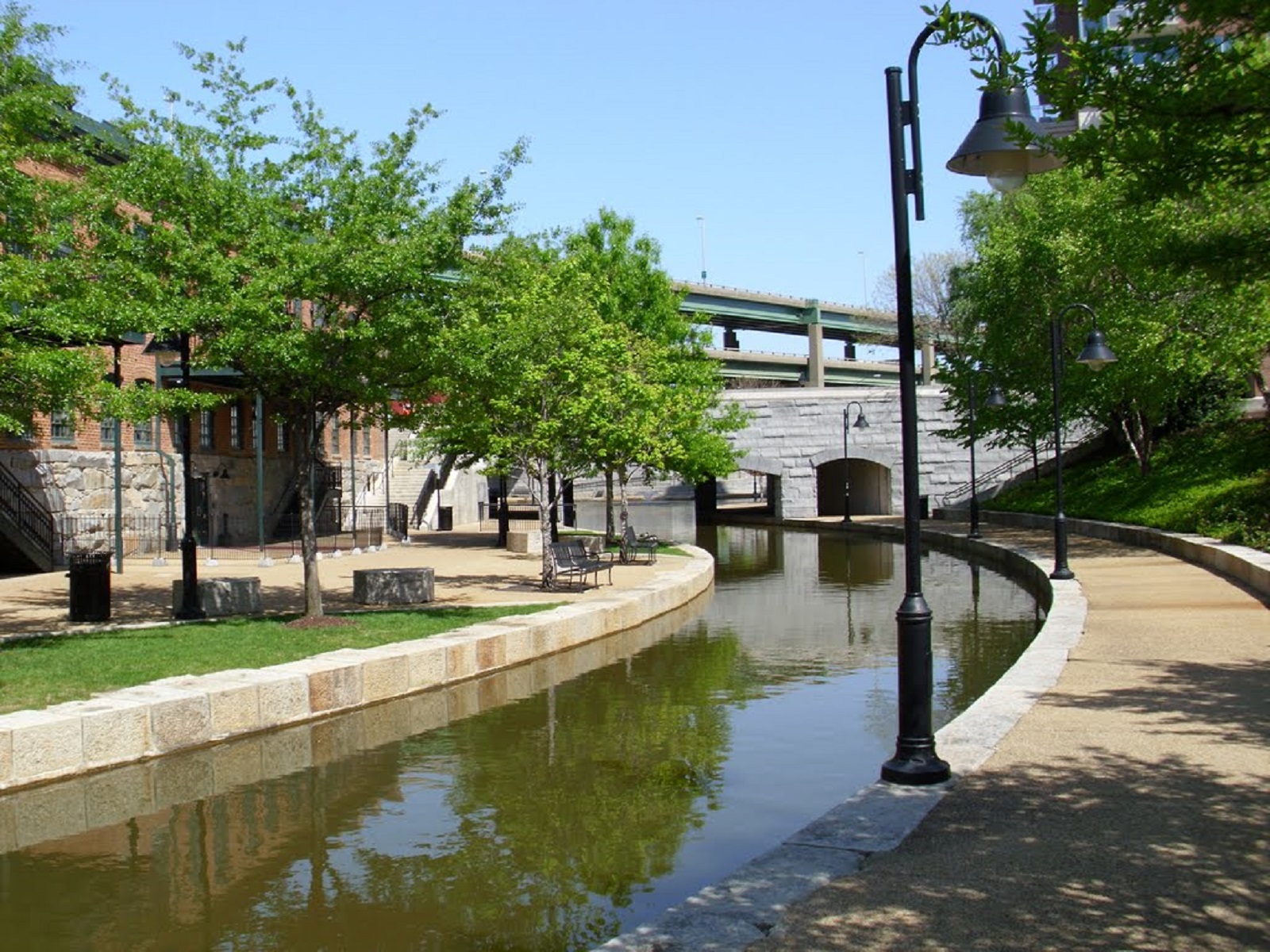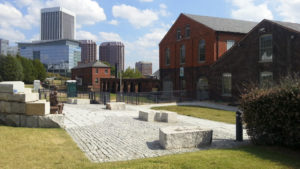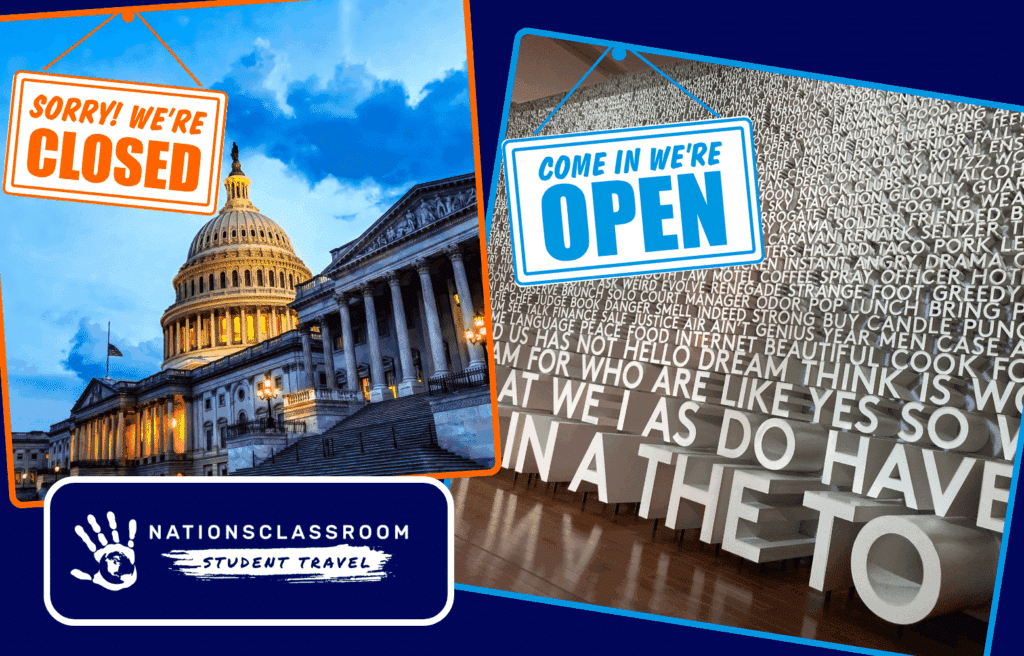SCHOOL TRIP SPOTLIGHT: Rafting on the James River & Riverfront Canal Trail Walking Tour

As Virginia’s largest river, the James River has held extraordinary historic, economic, environmental, and recreational importance to Virginians and to the United States. As a vital transportation and commercial pathway between the 17th and 20th Centuries, the river and surrounding area have been the site for Jamestown, the first permanent settlement in the New World; the colonial capital of Williamsburg; Revolutionary War battles; Civil War battles; and the modern-day capital city of Richmond.
But did you know that over the course of 7 miles – from just below Bosher’s Dam to the west to around the Mayo Bridge in downtown Richmond, where the water turns tidal – the James drops 105 feet? This creates a formation called the Falls of the James. As a result, the river produces Class I (easy moving) to Class V (violent) rapids and represents the only area in the world for some fantastic urban whitewater rafting.

Whether you’re a novice or a skilled whitewater rafter, Richmond has some great rentals and guided tours to navigate your groups down the river. They are organized, safety-conscious, and work hard to provide a solid experience. Notable companies like Riverside Outfitters offer guided rafting trips most days a week and have a variety of trips available to explore the upper, lower, and full run of the James River.
For a hair-raising, adrenaline-filled trip, head to the river in the spring or early summer (April to June) when water levels are highest and fastest. Most of the action occurs on the Lower James – between the Boulevard Bridge and downtown Richmond – which includes runs down the Class IV Hollywood Rapids in front of the crowds at Belle Isle, past the famous Hollywood Cemetery, and the triple drop down the Class III Pipeline Rapids.
However, should visitors prefer to interact with the river by remaining on land, a suitable alternative is the city’s Riverfront Canal Walk. With your tour manager, journey the 1.25 mile stretch between 5th and 17th streets along the north bank of the James to experience four centuries of Richmond’s history through its landmarks, statues, and exhibits.
Along the way, you’ll encounter the Kanawha and Haxall Canals. Constructed during the 1800s to fulfill George Washington’s dream of waterways connecting Western territories to Eastern cities, the canals and locks boosted commerce along the river by allowing cargo-carrying boats to bypass the falls. Look for the eye-catching street murals at the eastern half of the walk. Learn about the African-American impact on Richmond’s waterfront at Box Brown Plaza, named for the slave Henry “Box” Brown who famously escaped to freedom by boxing himself inside a crate from Virginia to Philadelphia. The plaza includes a memorial to Brown: a metal replica of the box in which he was shipped, which stands as a testament to the bravery it took to attain freedom.
Between South 15th Street and South 17th Street, it may be possible that you may see three trains meet at the same time. Known as the “Triple Crossing,” Richmond distinguishes itself as the only city in the world with this unique triple main-line railroad crossing. Also, see remnants of the Richmond Union Passenger Railway, the world’s first commercially successful electric streetcar system. Your walk will conclude around the historic Shockoe Slip and Shockoe Bottom neighborhoods. Long considered the commercial heart of Richmond throughout the 18th and 19th centuries, it is now home to a thriving entertainment and arts district. Former tobacco warehouses turned apartments, retail shops, and restaurants have contributed to the area’s growth.
So whether you choose to be on or along the James, you’ll still get to enjoy and appreciate the best of Richmond’s urban scenery as well as its greenery.
The SCHOOL TRIP SPOTLIGHT is written by NationsClassroom’s expert, licensed guides and features exciting attractions from the most popular student travel destinations on the historic East Coast.
For more information, please Browse Our Tours or Request Information from our team of student travel consultants.
Originally published March 2019, updated July 2021


